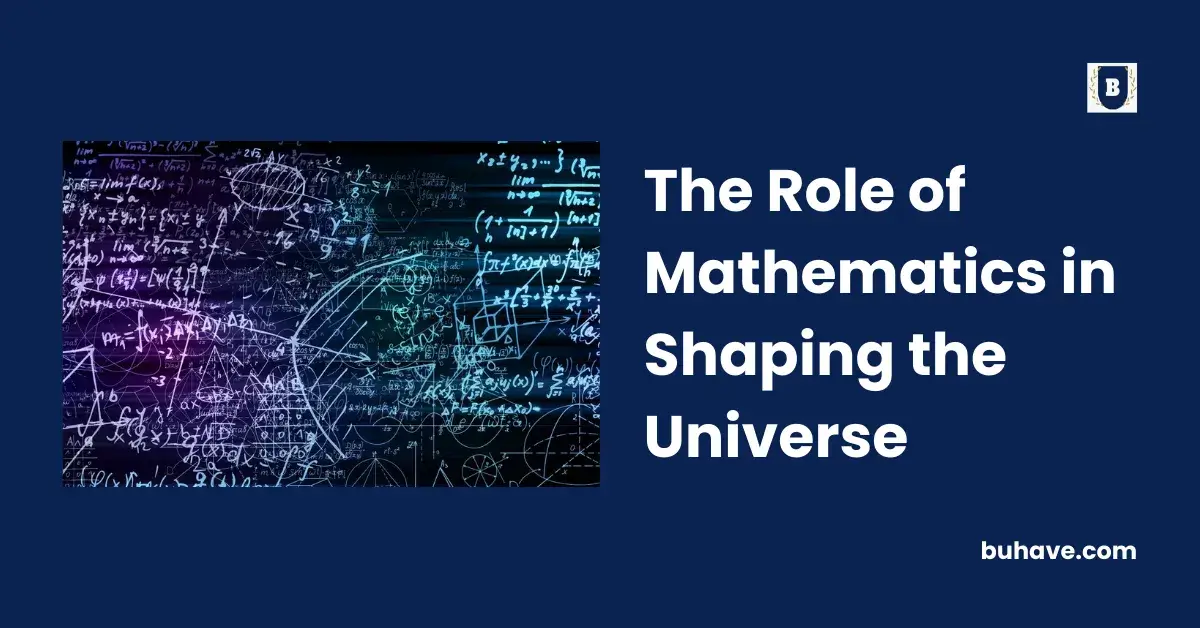The universe, a vast and intricate expanse, follows a set of fundamental laws and principles that govern its behavior and evolution. At the heart of understanding these laws lies mathematics, a universal language that has played a profound role in unraveling the mysteries of the cosmos. In this article, we will explore the crucial role mathematics plays in shaping our understanding of the universe, from describing the motion of celestial bodies to probing the depths of quantum mechanics and the cosmos itself.
The Language of the Universe: Mathematics
Mathematics is often described as the language of the universe, and for good reason. Its precision, abstraction, and universality make it an indispensable tool for scientists and researchers in their quest to comprehend the natural world. When it comes to the cosmos, mathematics serves as the key to deciphering its complexities. In a similar vein, Math Problem Solver harnesses the power of mathematics to simplify complex problems, aiding both students and professionals in their pursuit of understanding and solving real-world challenges.
Celestial Mechanics: Describing the Motions of Planets
One of the earliest and most profound applications of mathematics in the study of the universe is celestial mechanics. Ancient astronomers recognized the regular, predictable movements of celestial bodies, and mathematics became the means to describe and predict these motions accurately.
In the 17th century, Sir Isaac Newton formulated his laws of motion and universal gravitation, a monumental achievement that transformed our understanding of the cosmos. These laws provided a mathematical framework to explain the orbits of planets, the behavior of comets, and the dynamics of the solar system. Through mathematics, scientists could calculate the positions of celestial objects with unprecedented accuracy.
Einstein’s Theory of General Relativity: A Mathematical Revolution
Albert Einstein’s theory of general relativity, developed in the early 20th century, marked another pivotal moment in the marriage of mathematics and cosmology. This theory introduced a new understanding of gravity, where massive objects warp the fabric of spacetime. The mathematics of differential geometry was essential to express these concepts accurately.
Einstein’s equations, a set of complex mathematical equations known as tensor calculus, describe how matter and energy interact with spacetime. The predictions of general relativity have been confirmed through numerous experiments and observations, including the bending of light by massive objects (gravitational lensing) and the existence of black holes.
The Expanding Universe: The Friedman-Lemaître-Robertson-Walker Metric
In the early 20th century, mathematicians Alexander Friedman and Georges Lemaître, along with astronomers Howard Robertson and Arthur Walker, developed a mathematical framework that described the expansion of the universe. This framework, known as the Friedman-Lemaître-Robertson-Walker (FLRW) metric, is a set of mathematical equations that characterize the evolving universe’s geometry.
The FLRW metric revealed that the universe is not static but is expanding, a concept that was later confirmed by observations of galaxies moving away from each other. This mathematical insight, combined with observations like the cosmic microwave background radiation, led to the formulation of the Big Bang theory, which describes the universe’s origin and evolution.
Cosmological Models and Dark Matter: Mathematical Challenges
The study of the universe’s large-scale structure and evolution relies heavily on mathematical models. Cosmologists use mathematical equations and computer simulations to explore various scenarios for the universe’s development. These models consider factors such as the distribution of galaxies, the presence of dark matter, and the expansion rate of the cosmos.
Dark matter, an enigmatic substance that does not emit or interact with light, remains a mathematical and observational challenge. Its existence is inferred through its gravitational effects on visible matter, and understanding its properties requires sophisticated mathematical tools and simulations.
Quantum Mechanics: The Mathematics of the Microscopic Universe
While much of cosmology deals with the universe’s macroscopic scale, the realm of quantum mechanics focuses on the subatomic world. Quantum mechanics, a branch of physics that describes the behavior of particles at the smallest scales, relies heavily on mathematical formalism.
The mathematics of quantum mechanics is both beautiful and complex, involving concepts like wave functions, probability amplitudes, and operators. These mathematical tools enable scientists to predict particle behavior, explain the behavior of atoms and molecules, and understand the fundamental forces that govern the microscopic world.
Quantum mechanics also plays a role in cosmology, especially in the early moments of the universe. The mathematics of quantum field theory provides insights into phenomena like cosmic inflation, which describe the rapid expansion of the universe shortly after the Big Bang.
String Theory: The Mathematical Quest for a Unified Theory
String theory, a theoretical framework in physics, is another example of mathematics at the forefront of cosmological research. This theory attempts to unify the fundamental forces of nature (gravity, electromagnetism, and the strong and weak nuclear forces) into a single, comprehensive framework.
String theory is highly mathematical, involving complex algebraic structures and geometrical concepts. While it has not yet been confirmed through experimental evidence, it represents a mathematical quest for a grand unified theory of the universe, one that could potentially explain the fundamental laws governing the cosmos.
The Ongoing Collaboration: Mathematics and Cosmology
The role of mathematics in shaping our understanding of the universe is an ongoing collaboration. As technology advances and our knowledge deepens, mathematical tools become increasingly critical in solving complex cosmological puzzles. Mathematicians and physicists continue to work together to develop innovative mathematical models, simulations, and theories that push the boundaries of our cosmic comprehension.
Conclusion
Mathematics is not just a tool for describing the universe; it is an essential language that has played a transformative role in shaping our understanding of the cosmos. From the motion of celestial bodies to the mysteries of quantum mechanics and the search for a unified theory, mathematics has been our guiding light, illuminating the universe’s profound intricacies. As we continue to explore the cosmos, mathematics remains our constant companion, revealing the beauty, elegance, and complexity of the universe in all its glory.
– If you are looking for guest posts write for us education now.

